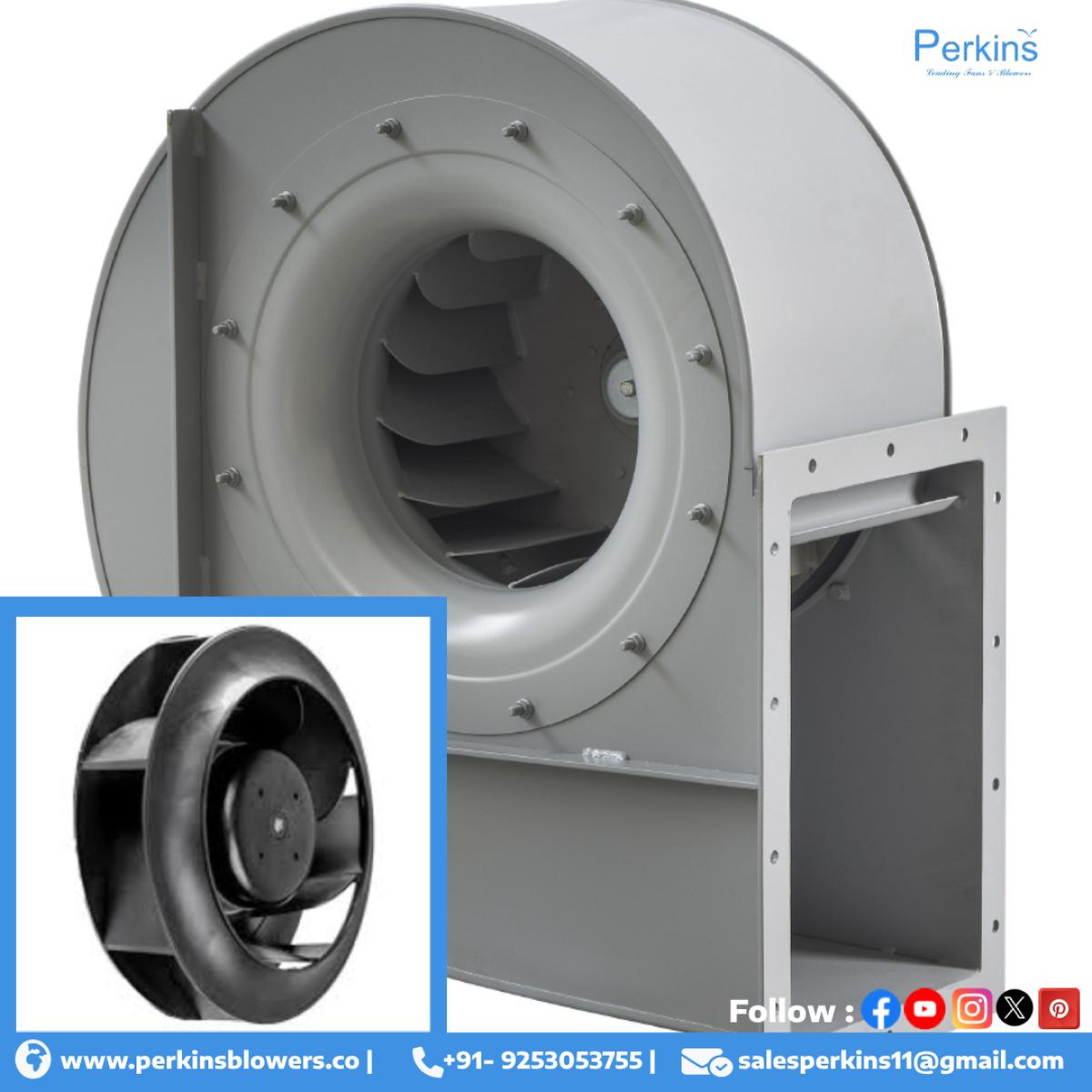
The backward curved centrifugal fan is designed with impeller blades that curve away from the direction of rotation. This unique geometry plays a significant role in optimizing aerodynamic performance. Here are the key components and their structure:
-
Impeller: The blades are curved backward and are non-overlapping. The design reduces air turbulence and ensures efficient energy transfer.
-
Housing (Casing): Typically spiral-shaped (scroll housing), which guides airflow toward the outlet.
-
Inlet Cone: Designed for smooth air entry, minimizing losses.
-
Drive Mechanism: Can be direct-drive or belt-driven depending on the application.
-
Bearings & Shaft: Built for durability and smooth operation in high-load conditions.
This structure results in a compact design with fewer moving parts, improving reliability and reducing maintenance needs.
Key Characteristics of Backward Curved Centrifugal Fans
-
High Static Efficiency:
Backward curved blades can achieve up to 85% static efficiency, making them ideal for energy-conscious operations. -
Non-overloading Power Curve:
The power consumption decreases after a certain point, preventing motor overloading and ensuring operational safety. -
Stable Airflow Performance:
These fans provide stable airflow even under varying static pressure, supporting continuous and reliable performance. -
Low Noise Operation:
Due to their aerodynamic blade design, they operate more quietly than forward-curved fans, which is essential for noise-sensitive environments. -
Durability in Harsh Conditions:
Made from stainless steel or coated materials, they resist corrosion, wear, and high-temperature exposure. -
Compact Footprint:
Their efficiency allows for compact designs that fit easily into tight spaces while delivering excellent airflow performance.
Also read : How Inlet Rings Improve Efficiency in Backward Curved Centrifugal Fans
Benefits of Using Backward Curved Centrifugal Fans
At Perkins Blowers, we design our backward curved centrifugal fans to provide the following benefits:
1. Energy Savings
The aerodynamic blade design reduces power consumption significantly. For industries aiming for energy conservation, these fans are an ideal solution.
2. Cost Efficiency
Though the initial cost may be slightly higher than other fan types, the low maintenance, high efficiency, and long service life result in substantial cost savings over time.
3. Improved System Performance
Backward curved fans maintain consistent airflow against resistance, ensuring better performance in HVAC systems, dust collection units, cleanrooms, and industrial ventilation.
4. Safe Operation
The non-overloading motor characteristic adds a layer of safety and makes system integration easier without oversizing the motor.
5. Customization for Applications
Perkins Blowers offers complete customization in blade size, material, and speed control to suit different industrial applications — from chemical processing plants to data centers.
Applications of Backward Curved Centrifugal Fans
-
HVAC Systems – for hospitals, malls, and office buildings.
-
Industrial Ventilation – manufacturing plants, steel mills, etc.
-
Dust Collection Systems – in woodworking, metalworking, and pharmaceutical plants.
-
Cooling Systems – for generators and large machinery.
-
Clean Room Air Handling – in electronics and medical industries.
Why Choose Perkins Blowers?
With years of experience in the air handling industry, Perkins Blowers has become a trusted name in centrifugal fan manufacturing. Our backward curved centrifugal fans are engineered for high performance, minimal energy loss, and exceptional durability. Every product is tested for static pressure, vibration, and ampere draw to ensure it meets industry standards.
When you choose Perkins Blowers, you choose reliability, efficiency, and industrial-grade performance.
Read more : How to Choose the Right Centrifugal Fan for Your Application?
